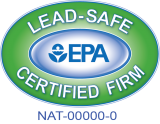What to Look for During a Roof Inspection
[slideshare id=131513447&doc=whattolookforduringaroofinspection-190212184601]
Your roof is your home’s first line of defense against the elements such as rain, hail, snow and extreme heat. What many homeowners don’t realize is that the roof is not only one of the most important parts of their home, it is also one of the most vulnerable. Constant exposure to often harsh conditions can quickly cause your roof’s health to deteriorate, resulting in costly repairs.
Your Inspection Checklist
Before you call an inspector, take some time to assess your roof. If you’re worried about specific areas of roof damage or have questions, jot them down. Let your inspector know your concerns before they get started so they know which areas you’d like them to pay particularly close attention to.
These are the most important areas of your roof to investigate.
Exterior
As you walk around the exterior of your house, use a pair of binoculars to get a look at the appearance of your roof. Make notes of any abnormalities. A few things to look out for include:
- Blistered, curled or split shingles
- Exposed nails
- Sagging along the edges or center of the roof
- Rusty, loose flashing around vents and chimneys 1,2
Any area where your roof is penetrated by vents, a chimney or any other roof feature warrants close inspection. Check that these areas are tightly sealed without holes or gaps.
Interior
The interior of the home can show several signs of roofing deterioration that you wouldn’t notice by looking at the exterior. Examine the following areas by yourself and with a professional roofing inspector:
- Attic: Leaks often reveal themselves in a home’s attic. If you notice dark spots on the attic’s wooden rafters, check if they are still wet. If the wood is soft, it’s a sign of rot.
- Ceilings: Check ceilings for signs of leaks. Water damage will often discolor portions of the ceiling or cause paint and walls to crack.
Inspection Day
You and the notes you took during your initial walkthrough should be present throughout the entire home inspection. Though you don’t need to follow the inspector into the attic, you should set aside time to talk through any issues or problems your roofing inspector encountered as well as solutions for repairs. These are some common problems an inspector will look for in addition to your concerns:
Mold
During the interior inspection, a roofing professional will pay special attention to chimneys and attic insulation for signs of mold and excessive water damage.
Clogged gutters
If your gutters are clogged with loose granules from your roof’s shingles, this is a sign that they are old and wearing away.
Loose seams
Metal roofs will expand and contract with temperature fluctuations, which can cause seams and screws to loosen and separate.
Damaged flashing
Loose or damaged flashing can lead to corrosion on the underside of the flashing materials and allow water to seep underneath your roof.3
Ask Questions
Inspectors can explain your roof’s strengths and weaknesses and give you invaluable maintenance tips. This information will be included in your final report, but for some, speaking to the inspector makes it easier to remember the information.
Many homeowners don’t know how to properly maintain their roofs. By scheduling an inspection and speaking directly to your inspector, you’ll have the knowledge you need to ensure your roof will stand up to environmental stressors for years to come.
Tips for Hiring a Roofing Professional
As with most services, receiving bids from several companies is one of the best ways to determine which will be the right fit for you. While on the hunt, look for established, licensed and bonded professionals with references from people in your area. Make sure the bid clearly defines the work that will be done, including repairs and the reasoning behind them, debris removal and grounds cleanup.
Professional Roof Repair and Replacement in Texas
With hurricane season right around the corner, it’s the perfect time to have your roof’s health evaluated by the professional contractors at Allied Siding & Windows. As a preferred installer of high-quality Owens Corning Duration® shingles, you can rest easy knowing your roof will protect your home from harsh wind and rains this season. For more information about our products and services, reach out online or give us a call at any of our three locations.
________
1 https://www.improvenet.com/a/new-roof-inspection
2 https://disastersafety.org/hurricane/roof-damage-checklist/
3 https://tadlockroofing.com/3-things-you-should-know-about-the-roof-inspection-process/









